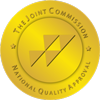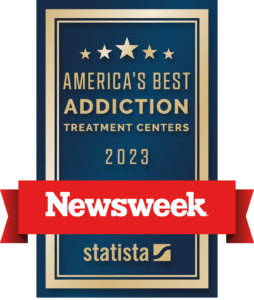Stimulant Addiction Treatment
Sometimes called “uppers,” stimulants are a class of psychoactive drug that increases activity in the brain. They can temporarily enhance alertness, mood, and awareness. Some stimulants are legal and widely used, but they can also be addicting.
Beneficial levels of stimulants can cause exhilaration, prolonged wakefulness, and loss of appetite. The effects are exaggerated when large doses are taken. Individuals who have been engaging in stimulant abuse for an extended time need targeted stimulant addiction treatment to help them overcome the withdrawal symptoms and psychological effects.
What Are Stimulant Drugs?

Simply put, stimulant drugs speed up the body’s systems. This includes physical and mental processes.
Some stimulant drugs are manufactured legally for the treatment of ADHD and other disorders. Prescription stimulants can get diverted from legitimate use and be sold and used illegally. Other illicit drugs cocaine or crystal meth are manufactured secretly for the illicit market.
Stimulant Drugs Include:
- Caffeine
- Nicotine
- Cocaine
- Methamphetamine
- Prescription stimulants
Prescription Stimulants
Prescription stimulants are used to treat attention-deficit hyperactivity disorder (ADHD), treat obesity by suppressing appetite, and treat narcolepsy by increasing wakefulness. They are prescribed as:
- Adderall
- Methylin
- Ritalin
- Concerta
- Dexedrine
Illicit Stimulants
- Methamphetamine – Methamphetamine is typically an illegally produced drug; however, it is available as a prescription as Desoxyn to treat obesity and ADHD.
- Khat – This is a stimulant made from the leaves and twigs of an evergreen shrub. Cathine and cathinone are active ingredients.
- Cocaine – Cocaine is a white crystalline powder that comes from coca leaves. Cocaine base (crack) looks like little white rocks.
- Methcathinone – This stimulant is similar to methamphetamine and cathinone.
- Synthetic cathinones sold as “bath salts”
Common Street Names
- Bennies
- Black Beauties,
- Cat
- Coke
- Crank
- Crystal
- Flake
- Ice
- Pellets
- Skippy
- Snow
- Speed
- Uppers
- Vitamin R
How are Prescription Stimulants Misused?
Prescription medications that are not being used as directed by and under the supervision of medical personnel are being misused.
If you:
- Use it in any way different from what you were prescribed.
- Take someone else’s medicine.
- Take the medicine only for the effect it causes—to get high.
In the original pill or capsule form, stimulants are swallowed. Alternately, tablets can be crushed, or capsules can be opened. Then the powder can be dissolved in water and injected, or it can be snorted or smoked.
Smoking, snorting, or injecting stimulants causes a sudden sensation known as a “rush” or a “flash.” Stimulant abuse is often related to a pattern of binge use, occasionally using large doses of stimulants over a short period of time.
Why Are Prescription Stimulants Misused?
When stimulants are misused, they are often taken to:
- Produce a feeling of exhilaration
- Improve self-esteem
- Improve mental and physical performance
- Increase activity
- Reduce appetite
- Stay awake for long periods
What Are the Effects of Stimulant Drugs?
The use of any drug always has some risks. There is no safe level of drug use.
Short-Term Effects of Stimulant Abuse Include:
- Loss of appetite
- Increased heart rate, blood pressure, and body temperature
- Nausea
- Sleep disturbances
- Panic and psychosis
- Convulsions, seizures, and death from high doses
Long-Term Effects of Stimulant Abuse Include:
- Permanent damage to blood vessels of the heart and brain
- High blood pressure leads to heart attacks, strokes, and death
- Liver, kidney, and lung damage
- Damage to tissues of the nose if snorted
- Breathing problems if smoked
- Infections and abscesses if injected
- Malnutrition
- Psychological dependence
- Psychosis
- Depression
- Brain damage, including strokes and epilepsy
Stimulants affect people differently depending on:
- Size, weight, and health
- Individual’s experience with using it
- Whether other drugs are taken at the same time
- The amount used
- The strength of the drug (this can vary from batch to batch with illegally manufactured drugs)
In small to low doses, these effects may be felt:
- Extreme happiness
- Feelings of wellbeing
- Increased heart rate and blood pressure
- Increased alertness
- Talkativeness
- Reduced appetite
Continued high-dose use is frequently connected to:
- Anxiety
- Tension
- Increased body temperature
- Aggression
- Seizures
- Chest pain
- Coma
- Death
Tolerance for Stimulants
When you need more and more of a drug to produce the usual effects, it is called tolerance. Tolerance can develop quickly, and psychological stimulant dependence occurs.
It has been observed that the strongest psychological dependence happens with the more powerful stimulants such as amphetamine, methamphetamine, cocaine, and methcathinone. A sudden stoppage is typically followed by depression, anxiety, craving, and extreme fatigue, known as a “crash.”
Can Prescription Drug Use Lead to Stimulant Addiction?
Misuse of prescription stimulants can lead to a substance use disorder (SUD). Eventually, this takes the form of substance dependence in severe cases. Unfortunately, long-term use of stimulants, even as prescribed by a doctor, can cause the person to develop a tolerance.
Substance use disorders occur when continued use of the drug causes problems for the user, but he continues to use regardless of the consequences. These can be health issues and problems meeting responsibilities at home, work, or school.
Heavy users may inject themselves every few hours. And continue to use until they have used up their supply or reached a point of delirium, psychosis, and physical exhaustion. While a person is using heavily, all other interests in their life take a backseat to recreate that first euphoric rush.
Effects of Using Stimulants with Other Drugs
Whether they are prescribed, over-the-counter, or illicit, taking stimulants with other medications can be dangerous and unpredictable. These are possible results of some combinations:
- Amphetamines + some antidepressants—elevated blood pressure, irregular heartbeat, heart failure, and stroke.
- Amphetamines + alcohol, marijuana, or benzodiazepines—puts the body under a large amount of stress dealing with the conflicting effects of each drug. This can lead to an overdose.
- Ice (crystal methamphetamine) + speed or ecstasy—this puts a huge strain on the heart and other body parts, which may lead to a stroke.
- Ice + alcohol, marijuana, or benzodiazepines—creates a massive strain on the body and more likely to overdose. The stimulant effects of ice may hide the effects of depressant drugs like benzodiazepines and increase the overdose risk
Simulant Withdrawal Symptoms
When a person develops a stimulant use disorder and stops using the drug, withdrawal symptoms will occur. Symptoms can include:
- Fatigue
- Depression
- Sleep problems
- Intense cravings
Can You Overdose on Stimulant Drugs?
Yes, you can overdose on stimulants. An overdose happens when the individual uses enough of the drug to produce a life-threatening reaction or death.
When a person overdoses, they commonly have several different symptoms, including:
- Restlessness
- Tremors
- Overactive reflexes
- Hallucinations
- Panic
- Confusion
- High fever
- Convulsions
- Cardiovascular collapse
- Death
Since accidental death is partly due to the effects of stimulants on the body’s cardiovascular and temperature-regulating systems, physical exertion increases the dangers of stimulant use. In other words, if you use a stimulant regularly to increase your physical exertion capabilities, the physical exertion might kill you.
How is Stimulant Drug Overdose Treated?
Since stimulant overdose often leads to a heart attack or seizure, the most important thing is to get medical help immediately. First responders and ER doctors treat the overdose by attempting to restore the blood flow to the heart and stopping the seizures with medication if necessary.
Signs of Dependence on Stimulant Drugs
- Increased body temperature
- Euphoria
- Dry mouth
- Faster breathing
- Dilated pupils
- Increased energy and alertness
- Decreased fatigue
- Decreased appetite
- Weight loss
The Control of Stimulant Drugs in the United States
Several stimulants have no medical use in the United States but have a high possibility for harmful use. They are controlled in Schedule I. Some prescription stimulants are not controlled, and some, like tobacco and caffeine, don’t require a prescription.
Over-the-Counter Stimulants
Stimulant chemicals in over-the-counter products such as ephedrine and pseudoephedrine can be found in allergy and cold medicine. As a result of The Combat Methamphetamine Epidemic Act of 2003, retail stores have to keep these products out of the reach of customers.
Regulated retailers are required to keep a written or electronic form of a logbook to record sales of these products. To purchase them, customers must show a photo ID issued by a state or federal government. Retailers are then required to enter the name, signature, address, date, and time of sale into the logbook. In addition to all that, there are daily and monthly sales limits for customers.
Caffeine, the Most Popular Stimulant
Caffeine is also a stimulant drug. It’s found in the seeds, nuts, and leaves of a variety of plants, including:
- Coffea Arabica (used for coffee)
- Thea Sinensis (used for tea)
- Cola acuminata (used as a nut, tea, or in soft drinks including cola)
- Theobroma cacao (used in cocoa and chocolate)
- Paulina cupana (used guarana in snack bars and energy drinks)
Overdoes from Caffeine?
It is possible to die from having too much caffeine, but it is very rare. However, it could happen if a person drank about 80 cups of strong coffee, one after the other. Also, small children can have caffeine poisoning if a smaller amount, equal to about 12 energy drinks is consumed one after the other.
Using Caffeine with Other Drugs
- Caffeine + alcohol—put a strain on the body and can cover the effects of alcohol such as falling asleep, which can then lead to drinking more and engaging in more risky behavior.
- Caffeine + other stimulant drugs—increases the risk of cardiovascular problems.
Nicotine
Although not usually thought of as a stimulant, nicotine is also a stimulant drug. It is one of the three most widely used psychoactive drugs in the world. This is even though there may be no medical uses for it.
People who smoke tobacco products regularly can build a tolerance to the short-term effects of smoking tobacco. Products containing nicotine have well-documented negative health effects and are considered a major preventable cause of premature death and disability.
Using Nicotine with Other Drugs
- Nicotine + benzodiazepines—reduces the effectiveness of benzodiazepines.
- Nicotine + birth control pill—increases the risk of blood clots.
Withdrawal from Nicotine
Once again, your body must adjust to functioning without nicotine when you give it up. Withdrawal symptoms may last from a few days to a few weeks. Withdrawal symptoms include:
- Cravings
- Irritability, anxiety, depression
- Increased appetite and weight gain
- Trouble concentrating
- Headaches
- Coughing and sore throat
- Upset stomach and bowels
Stimulant Addiction Treatment at Sana Lake
Treating stimulant addiction starts with managing stimulant withdrawal. This will be done by having the individual attend a detox program first. Once they are free of physical stimulant dependence they can focus more on overall treatment for stimulant abuse.
Treatment centers will review an individual’s history of substance addiction before they discuss treatment options. In deciding between outpatient treatment or inpatient treatment for stimulant addiction, treatment professionals will also review the individual’s addiction treatment history. Those who have not been successful with outpatient programs may be referred to inpatient treatment for stimulant addiction.
Detox
Individuals struggling with stimulant addiction, whether prescribed or illegal, will need a period of detoxification before beginning addiction treatment. Going through withdrawal can be extremely uncomfortable. In a detox center, the individual receives 24-hour monitoring and medical supervision in case of an emergency. Going through detox is an important first step to treat stimulant dependence.
Behavioral Therapy
At this time, no medication is FDA-approved for stimulant addiction. Therefore, psychotherapy is the basis of the treatment of cocaine addiction or other stimulant use disorders. There are various methods to help people with stimulant use disorders “unlearn” their addiction. They learn ways to resist cravings and build a drug-free life.
Common behavioral therapies are:
- Cognitive Behavioral Therapy (CBT)—CBT helps individuals recognize and avoid people, places, and situations that might trigger their drug use. They then learn new ways of coping with a drug-free life.
- Contingency Management Therapy (CMT)—CMT uses rewards and incentives such as restaurant or movie vouchers to encourage abstinence.
- Family Therapy—Members of the family attend sessions with the individual with SUD if they choose. Both parties learn how to live without the stress of substance dependence clouding the relationships.
- Individual and Group Therapy—Therapy sessions, either one-on-one with the counselor or in a group setting, can help a person with addiction begin to understand why they started using in the first place.
Stimulant Addiction Treatment Programs
Common addiction treatment programs include:
- Residential Treatment—In a residential program, the person with a substance use disorder lives at the addiction treatment facility in a safe, structured, medically supervised program. This is an intense program for anyone suffering from serious substance abuse issues.
- Partial Hospitalization Program (PHP)—In this program, individuals will attend full days of counseling and therapy, but do not live in the program. This is good for people who have a dual diagnosis of substance use disorders and co-occurring mental disorders.
- Intensive Outpatient Program (IOP)—An IOP is less intense than a PHP. Individuals don’t live in the facility and will still attend counseling sessions but for fewer hours per week. This program is still considered more structured than a standard outpatient program.
- Standard Outpatient Treatment (OP)-A standard outpatient program is for anyone that is not suffering from serious substance abuse and can manage their day-to-day responsibilities while also attending addiction treatment.
Do You Need Stimulant Addiction Treatment?
Are you struggling with an addiction to stimulants? Do you have a family member or someone else close to you who is? Either way, we can help you at Sana Lake. Our staff of trained professionals is experienced in helping people just like you. That is all we do. Contact us now. This is not the time to “think about it.” Somebody’s life is literally in jeopardy the longer you wait.



